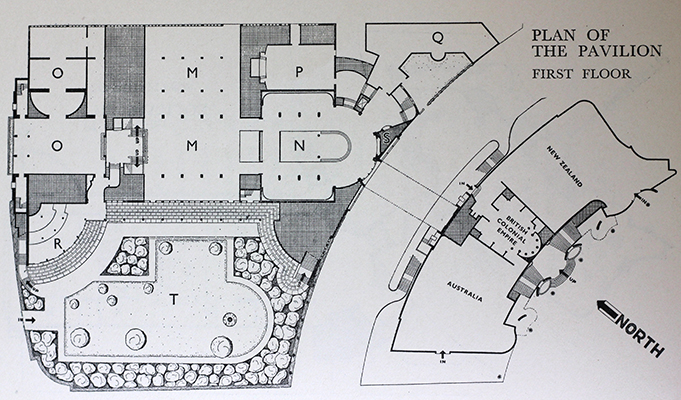Saturday, May 2, 2015
The British Pavilion & The Common Heritage of Democracy
When a nation decides to participate in a world fair, it is their responsibility to create a pavilion that simultaneously blends in with and stands out from the rest of the grounds and to design an exhibition that corresponds to the fair theme. Let's take a look at the British pavilion, which succeeded on both fronts.
The British pavilion was located to the left of the Lagoon of Nations. It consisted of two buildings linked by a bridge. The larger building housed the United Kingdom hall while the smaller south building houses the halls of the British Colonial Empire (including territories in East and West Africa, Far East, West Indies, Mediterranean and Indian Ocean), Australia, and New Zealand.
The buildings were large and stately, with sleek lines, giving it a monumental yet modern feel. Flanking the entrance stood two gilded lions, accompanied by other lions founded in bas-relief on the walls.
The British Pavilion's answer to the "Democracy and World of Tomorrow" theme was to show the British legacy behind American democracy and its founder, George Washington. The exhibition featured an extensive Washington family tree proving him to be a direct descendant of King John, who granted the Magna Carta, and nine of the twenty-five barons who signed it. The exhibition even featured one of the four original copies of the Magna Carta. The link between British tradition and American democracy was of the utmost importance to the British, who, a few weeks after the fair opened, planted a seedling royal oak from Windsor Great Park on the fair grounds.
Subscribe to:
Posts (Atom)


